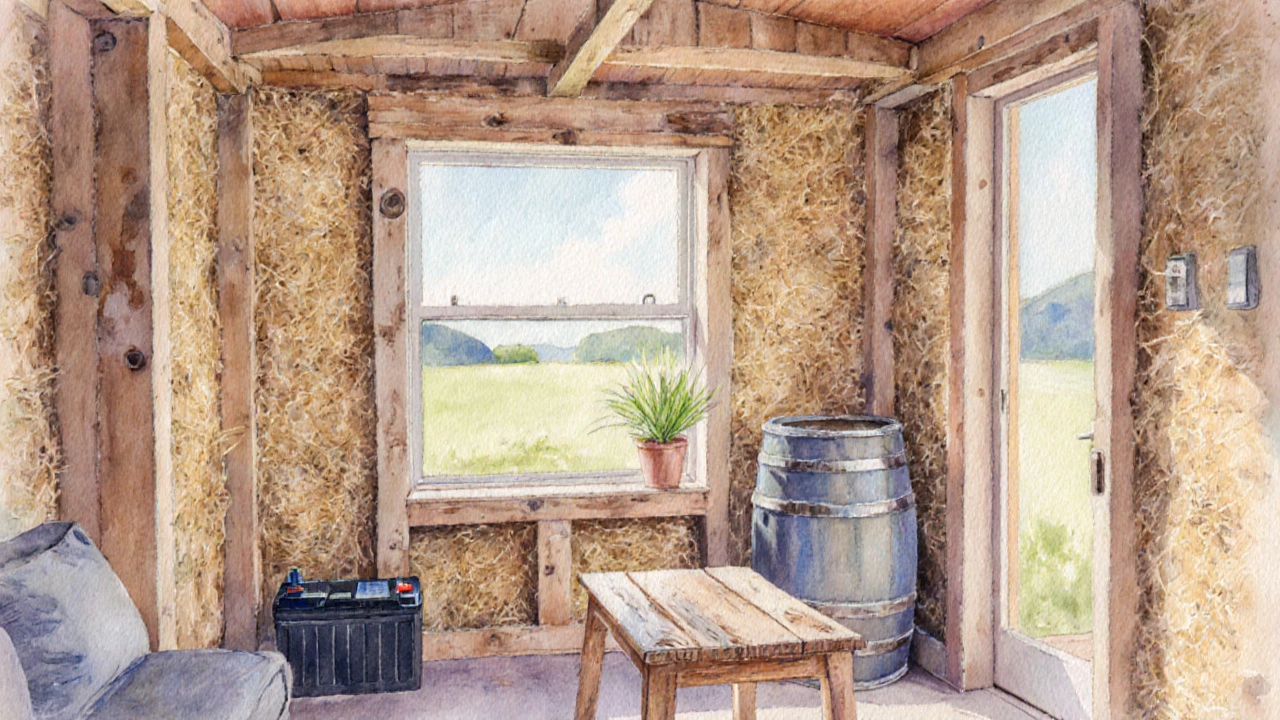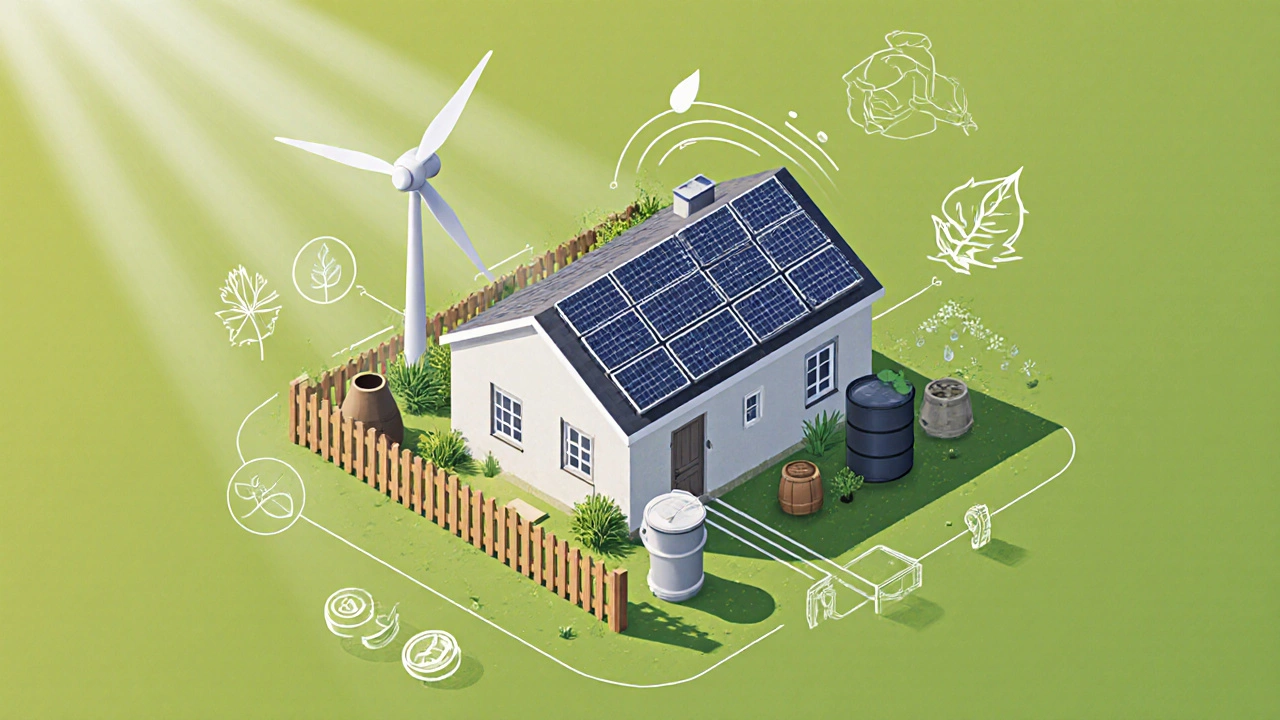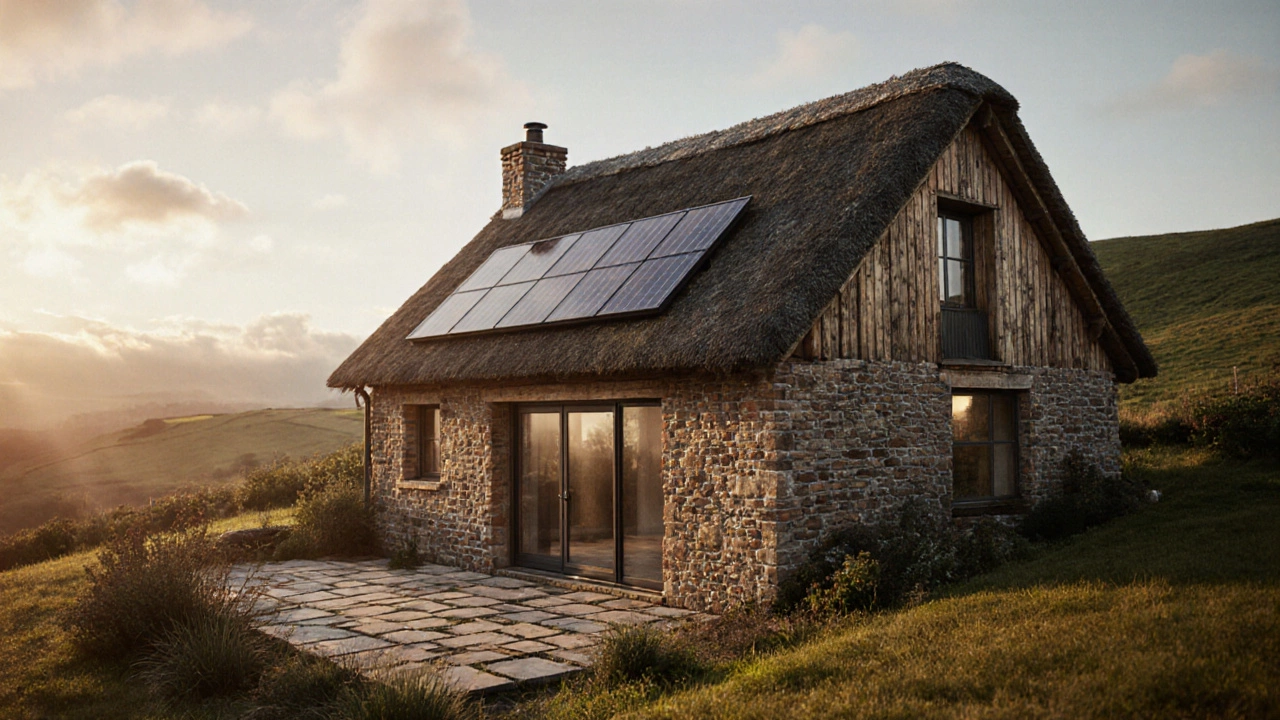Eco Cottage Impact Calculator
Compare Your Home's Impact
Enter your current home's details below to see how an eco cottage could reduce your environmental impact and save money.
Your Eco Cottage Impact
Enter your values and click "Calculate Impact" to see the results.
Did You Know?
An eco cottage typically uses 1,500–2,000 kWh annually compared to 8,000–10,000 kWh for a traditional home.
This means an eco cottage avoids about 1.5 tonnes of CO₂ per year – equivalent to planting 20 trees annually!
Eco Cottage vs Traditional Home Comparison
| Feature | Eco Cottage | Traditional Home |
|---|---|---|
| Annual Energy Use | 1,500–2,000 kWh | 8,000–10,000 kWh |
| Carbon Footprint | ~1.5 tonnes CO₂/year | ~6.5 tonnes CO₂/year |
| Water Consumption | 5,000–7,000 L/year (with rain harvesting) | 12,000–15,000 L/year |
| Initial Cost | $120,000–$180,000 | $150,000–$250,000 |
| Maintenance Frequency | Low (natural materials) | Medium–High |
Ever wondered what a eco cottage actually looks like? It’s more than a cute wooden cabin - it’s a purposeful, low‑impact home designed to tread lightly on the planet.
When people talk about Eco Cottage is a small, sustainably built dwelling that minimizes environmental impact through green materials, energy‑saving design, and often off‑grid systems, they’re describing a movement that blends comfort with responsibility.
Why Sustainable Housing Matters
Sustainable Housing is the practice of constructing and operating homes in a way that reduces resource consumption, waste, and carbon emissions over the building’s lifecycle. Building an eco cottage is a concrete step toward that goal because the scale is manageable and the design choices are clear.
Core Principles of Green Building
Green Building refers to a set of strategies that aim to improve energy efficiency, use renewable resources, and create healthier indoor environments. In an eco cottage, these strategies manifest in three main areas: energy, materials, and water.
Energy‑Saving Design: Passive Solar and Renewable Power
Passive Solar Design is an architectural approach that captures sunlight for heating, lighting, and ventilation without mechanical systems. By orienting windows toward the sun, adding thermal mass like stone floors, and incorporating proper shading, an eco cottage can stay warm in winter and cool in summer with minimal heater use.
Pair that with Renewable Energy sources such as photovoltaic panels, small wind turbines, or micro‑hydro systems that generate electricity on‑site. A typical 3‑kW solar array on a Devonport cottage can cover most lighting, appliances, and even electric heating, cutting grid reliance dramatically.

Low‑Impact Materials and Construction
Low‑Impact Materials include locally sourced timber, straw‑bale insulation, reclaimed brick, and non‑toxic finishes that reduce embodied carbon and support regional economies. Choosing certified timber from New Zealand’s sustainable forests, for example, cuts transport emissions and ensures the wood is harvested responsibly.
Many builders also adopt the Tiny House Movement philosophy, which encourages compact footprints, modular construction, and efficient use of space. A 300‑sq‑ft eco cottage uses far fewer materials than a 1500‑sq‑ft traditional home while still delivering essential comfort.
Off‑Grid Living and Carbon Footprint
Off‑Grid Living is a lifestyle that relies on self‑generated power, rainwater harvesting, and composting toilets to reduce dependence on municipal utilities. While not every eco cottage goes fully off‑grid, integrating rain barrels, grey‑water recycling, and low‑flow fixtures can lower water use by up to 50%.
Calculate the carbon savings by comparing the annual energy use of an eco cottage (often under 2,000kWh) with a conventional home (about 8,000-10,000kWh). That difference translates to roughly 1.5tonnes of CO₂ avoided each year - a tangible impact over a 30‑year lifespan.
Step‑by‑Step Guide to Building Your Own Eco Cottage
- Choose a site with good solar exposure and natural wind protection.
- Check local zoning and obtain any required permits for alternative building methods.
- Sketch a compact floor plan that aligns the longest wall toward the sun.
- Select low‑impact materials: certified timber, natural insulation, and non‑volatile paints.
- Design the energy system - size solar panels, add a battery bank, and plan for backup heating.
- Integrate water solutions: rainwater collection, low‑flow fixtures, and possibly a composting toilet.
- Hire a builder experienced in sustainable methods or work with a kit supplier that offers eco‑focused packages.
- Monitor performance after move‑in and adjust shading, ventilation, or battery capacity as needed.

Benefits That Matter
Environmental: Reduced emissions, less waste, and a smaller water footprint.
Financial: Lower utility bills, potential government rebates for renewable installations, and higher resale appeal in eco‑conscious markets.
Health: Better indoor air quality thanks to non‑toxic finishes and natural ventilation.
Common Misconceptions and Pitfalls
- “Eco cottages are only for hippies.” - Modern designs blend aesthetics with high performance, appealing to a wide audience.
- “They’re too expensive.” - While upfront costs can be higher, life‑cycle savings often offset the initial outlay within 5‑10years.
- “You have to live off the grid completely.” - Many owners stay connected to the grid for backup while still enjoying substantial self‑generation.
Quick Checklist Before You Start
- Site orientation and solar potential.
- Local building codes for alternative materials.
- Budget for renewable energy hardware.
- Supply chain for sustainable timber and insulation.
- Plan for water harvesting and waste management.
| Feature | Eco Cottage | Traditional Cottage | Modern Prefab |
|---|---|---|---|
| Annual Energy Use (kWh) | 1,500-2,000 | 8,000-10,000 | 4,000-6,000 |
| Carbon Footprint (tonnes CO₂/yr) | ~1.5 | ~6.5 | ~3.2 |
| Water Consumption (L/yr) | 5,000-7,000 (with rain harvesting) | 12,000-15,000 | 9,000-11,000 |
| Initial Cost (NZD) | 120,000-180,000 | 150,000-250,000 | 130,000-200,000 |
| Maintenance Frequency | Low (natural materials) | Medium-High | Medium |
Frequently Asked Questions
What size is an eco cottage?
Most eco cottages range from 200 to 400sqft, though larger designs exist. The key is keeping the footprint compact to reduce material use and energy demand.
Do I need to be an expert to build one?
No. While specialist knowledge helps, many kits and prefabricated panels are designed for DIY builders. Hiring a contractor with green‑building experience can bridge any gaps.
Can an eco cottage be fully off‑grid?
Yes, if you size solar, battery storage, and water systems appropriately. Many owners start partially connected and transition to full off‑grid as they fine‑tune their setup.
What are the biggest cost drivers?
Renewable energy hardware (panels, batteries) and high‑quality sustainable timber tend to be the most expensive items, but they deliver the biggest savings over time.
Is financing available for eco cottages?
Several New Zealand banks and green‑loan programs offer preferential rates for energy‑efficient homes. Check with local lenders about green‑mortgage options.
